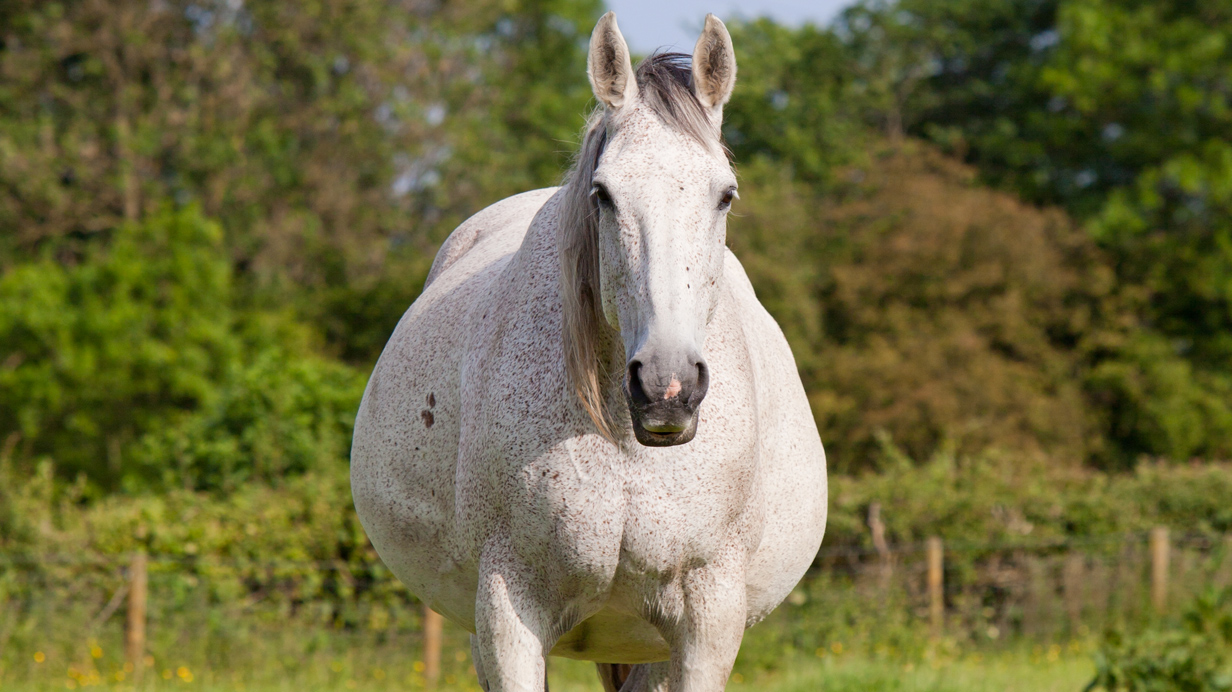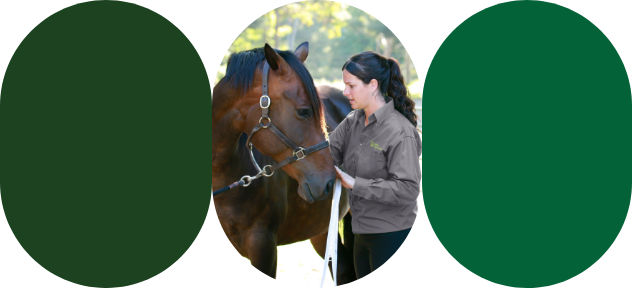Properly feeding a broodmare
At each stage of gestation, a broodmare has specific nutritional requirements. Providing a balanced diet and appropriate management is therefore essential to its well-being and the foal’s health.
The broodmare’s gestation period is 11 months, and the lactation period ranges from 6 months to 1 year, depending on management at the farm.
The nutritional requirements of broodmares can be divided into several distinct steps.
Prior to insemination
Prior to insemination, the broodmare must have a body condition scoring (BCS) of around 5 or 6 on a scale of 1 to 9. At insemination, broodmares whose BCS is less than 5 have lower fertility due to lower secretion of a hormone called leptin.
The first months of gestation
Nutritional requirements vary significantly from early to late gestation. To begin with, the requirements in the first five months are very similar to those of mares at maintenance. They gradually increase until the ninth month, and then rapidly until foaling. This variation can be explained by the fact that the fetus does not grow consistently during the 11 months of gestation. At birth, the newborn should weigh between 9% and 12% of the mare’s body weight.
After foaling
After foaling, the broodmare’s nutritional needs increase considerably to meet the physiological requirements of lactation.
For the first three months, the mare produces the equivalent of about 3% of its body weight in milk each day. Milk production reaches its peak in the first month, and then gradually decreases until weaning.
The composition of the milk varies significantly during the lactation period. The fat and protein content decreases, while the percentage of lactose increases.
Energy and protein requirements
Throughout gestation and lactation, the mare should maintain a BCS of around 6 out of 9. If weight loss occurs, the ration should be adjusted to meet energy requirements.
Table of daily requirements for a broodmare that weighs 600 kg, with appropriate body condition scoring.
During this period, the mare’s diet must include a greater protein intake to avoid depleting reserves and ensure good milk composition.
Research has shown that mares that do not receive adequate protein need more time to start ovulating again after the anovulatory period than those that receive a more protein-rich diet.
To meet the specific needs of broodmares and prevent deficiencies, it is recommended that legume hay (clover, alfalfa) and protein-rich feed such as Materna be given. A protein supplement such as Topp40 can also be useful when forages have a low protein content.
Minerals and vitamins
Each of the minerals and vitamins must be provided in sufficient quantities according to the broodmare’s specific requirements at the various stages of gestation and lactation.
Some studies have shown that mares draw on the nutrients from their own reserves when external mineral sources are insufficient. For example, a loss of bone density can occur when there is a calcium deficiency, or when the calcium/phosphorus balance in the ration is not adequate.
It is therefore indispensable to develop a feed program to prevent deficiencies and meet the requirements in micronutrients essential to reproduction. For example:
Calcium is absolutely necessary for the foal’s skeletal development and the mare’s milk production.
Selenium is a powerful antioxidant involved at the muscular level.
Vitamin A is essential to embryogenesis.
Vitamin E plays a role in immune function and DNA synthesizing.
Several tips can help you meet your broodmare’s needs:
During gestation, some mares may have insulin-resistant tendencies. It is therefore recommended that a feed with a low to moderate glycemic index, such as LinoFibre (in early gestation) and Materna (from the middle of gestation onwards), be used.
In late gestation, mares have less space in their intestinal tract. As a result, some mares try to reduce their forage consumption. Adding a complete feed such as Materna helps meet their nutritional requirements, while decreasing the need to consume large volumes of hay. It is nevertheless recommended that unlimited hay, which they can eat according to their appetite, be supplied.
Given the considerable amount of feed sometimes needed to meet a mare’s requirements during lactation, the daily ration should be divided up into several meals to promote the absorption of nutrients and prevent digestive issues.
Remember that water consumption increases considerably during lactation. It is therefore essential to provide access to fresh, clean water at all times.


